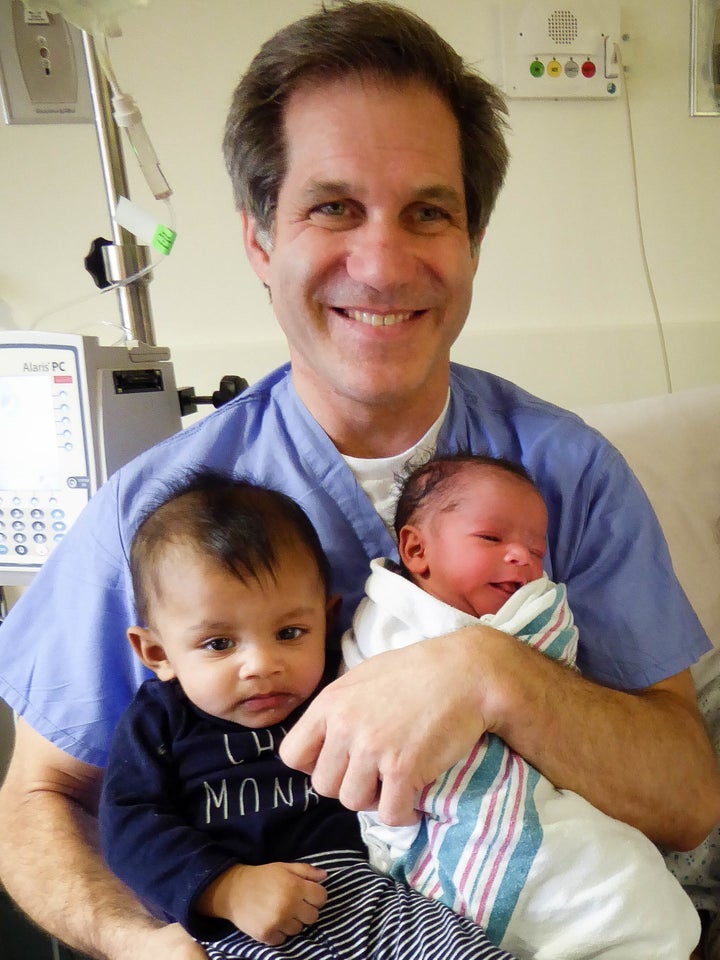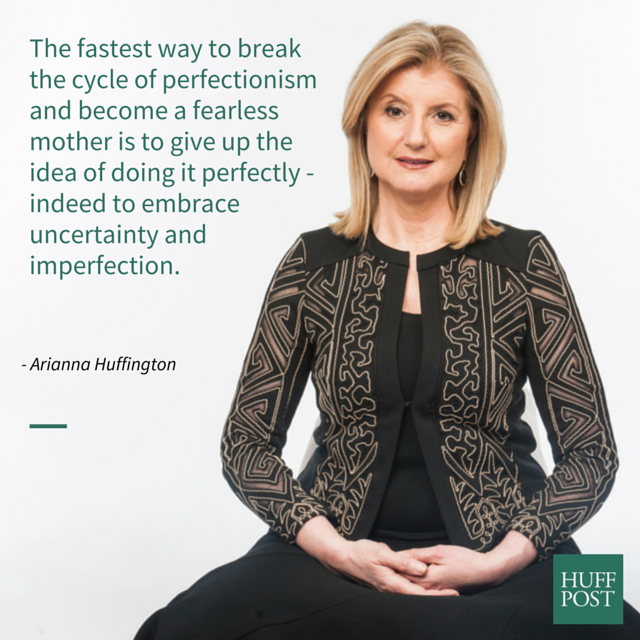
She lay on an operating table, in the throes of major abdominal surgery, but Jasmine Patel felt a sense of complete calm and focus the moment her baby girl was born. Her doctor Peter Gearhart, a clinical assistant professor of obstetrics and gynecology at the University of Pennsylvania, paused, bringing the hectic operating room to a hush.
“He said, 'OK everybody, this is what we’ve been waiting for. Quiet down.'” Patel recalled in a conversation with The Huffington Post three weeks after her daughter's birth. “Within the chaos, he managed to create a quiet moment.”
Gearhart and his team also waited to cut the umbilical cord, a practice known as delayed cord clamping, which has been shown to increase a baby’s iron stores and blood volume. And it was Patel's husband, Apu Gupta, who cut it -- shimmying his arm through a sterile sleeve that allowed him to participate in a rite of new parenthood without compromising safety. Almost immediately after, nurses handed Gupta his new baby girl. He slipped her underneath his surgical scrubs, holding her brand new body tight against his warm skin.
“It’s a really magical moment,” the new father told HuffPost. “This new life has just entered the world, and she’s, just, next to you. A C-section can feel so much more functional [than a vaginal birth], but they did a really great job of trying to bring that emotion back to the process.”
More than 1,200,000 deliveries in the United States each year are Cesarean sections, and they are rarely afforded the same kind of affection many women feel toward vaginal birth. Vaginal deliveries, women are told, can be empowering, satisfying, even orgasmic. C-sections, by contrast, are thought of as dispassionate and clinical -- a second choice that happens to mothers, rather than a process they actively participate in. Things like skin-to-skin contact, or giving birth in a space that feels calm and quiet, have long been viewed as perks of vaginal births only. But medical providers across the country -- like Dr. Gearhart, and his colleagues at Penn Ob/Gyn Midwifery care -- are working hard to change that.
"Within the culture of medicine, we get so used to doing things a certain way," Gearhart told HuffPost. "And when things are much more technical, like in the operating room, we tend to focus more on those technical aspects than the humanistic aspects."
At Gearhart's practice, which consists of four doctors and 12 midwives, that means C-section patients are able to request measures such as delayed cord clamping, as well as more atmospheric tweaks, like dimmed lights or particular music. These options are permitted on a case-by-case basis, Gearhart explained, but the staff works hard to make them available to patients when the medical circumstances allow.
“One of the things that makes a huge difference [to women] in how they experience a Cesarean birth, both in the short-term and long-term, is how they’re taken care of during the labor process,” said Pam Kane, a certified nurse-midwife with Penn Ob/Gyn and Midwifery. And that goes for everything from how involved she feels in major decisions about her labor to the specifics of her surgical environment. Dim lighting, in other words, may not have direct bearing on a newborn's health, but it can go a long way in making a new mother feel more present and comfortable during a profound, vulnerable moment in her life.
A primary area of focus for Gearhart's practice -- and for Pennsylvania Hospital -- is providing C-section mothers with the option of immediate skin-to-skin contact with their babies. Later this month, the hospital plans to launch a three-month pilot study among low-risk mothers who have scheduled C-sections in order to establish clear guidelines. Skin-to-skin contact sounds simple, but there are many issues hospitals must account for in the operating room. It requires, for example, that a dedicated nurse be present to help ensure the woman holds the baby safely while she still has IVs in and while her surgery is being completed. The sterile surgical field must be protected.
With traditional C-section practices, many patients "lose that sense of being a part of the birth because the baby is taken out, goes to a warmer, [and then] we do an assessment” said Ruth DiLeo, nurse manager of labor and delivery at Pennsylvania Hospital, who has helped spearhead the pilot program.
“This really changes things for patients, so there are just a few minutes when they’re not able to hold their babies," she continued. "It really, for the patients, allows them to be much more a part of their birth than in the past.”
Ultimately, the ongoing changes taking place in Pennsylvania speak to what childbirth educator Erica Lyon described as a surge of awareness in this country, within the last five years or so, about how important it is to make C-sections better for women. A team of labor and delivery nurses has devised a sterile drape that would make skin-to-skin easier to facilitate at many hospitals, and a growing number of facilities are offering what so-called "family-centered" Cesareans. That broader effort to improve the C-section experience, Lyon says, has also coincided with increased scrutiny of the high C-section rates in the U.S.
“Anybody who is for the physiological, psychological health of women is going to support [the idea] that we need to make surgical birth a better experience for women,” Lyon said. “But that will only work if, in parallel, we are reducing the number of C-sections.”
For Patel, a C-section was an absolute necessity. After several pregnancy losses, she had been diagnosed with an "incompetent cervix" that opened too soon. (In fact, she and Gupta had another daughter six months earlier via surrogate.) Because of her medical history, and because of her practical, scientific nature (she's a biomedical engineer), Patel's only focus leading up to her surgery was that her daughter was born healthy.
But at the same time, she and her husband cherish the small ways that their gentler Cesarean experience allowed the awe and wonder of childbirth to infiltrate the operating room.
“Sterility and infection control are paramount in any surgical procedure,” Gearhart said. “But at the same time you’ve got this patient who is having this pivotal moment... and we're trying to bridge that gap.”
"This is the birth of your child,” Patel echoed. “Even if you are behind a sterile field, and you are going through major abdominal surgery, it's emotional."

Also on HuffPost:
